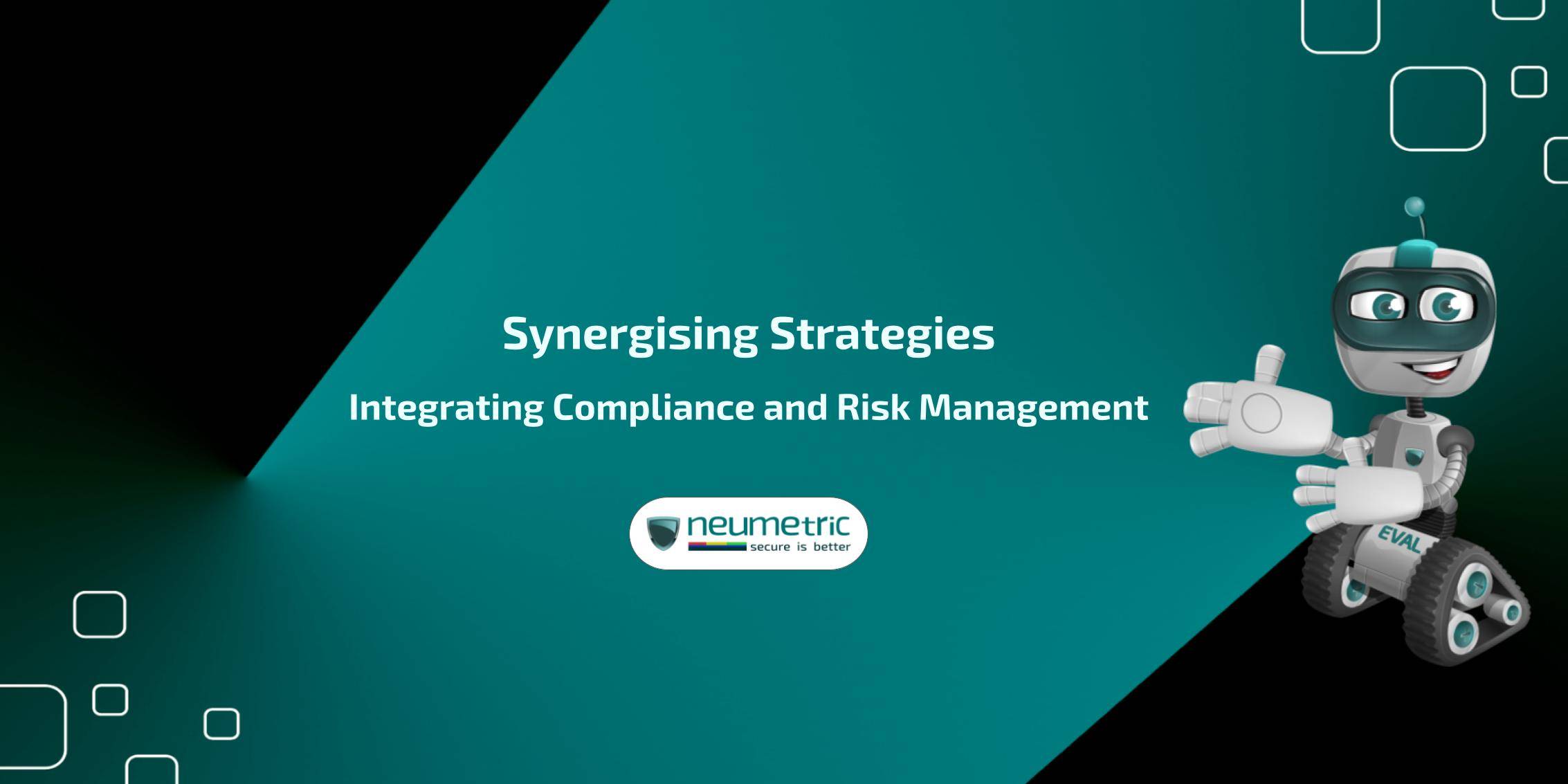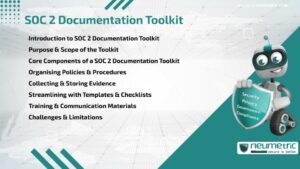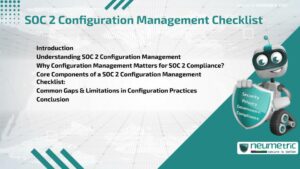Table of Contents
ToggleSynergising Strategies: Integrating Compliance and Risk Management
Introduction
In the realm of modern business operations, two critical pillars stand tall: compliance and risk management. Compliance refers to adhering to laws, regulations, standards & ethical practices relevant to a particular industry or jurisdiction. It ensures that businesses operate within legal boundaries, maintain transparency & uphold the trust of stakeholders.
Risk management involves identifying, assessing & mitigating potential risks that could hinder the achievement of organizational objectives. It encompasses financial risks, operational risks, regulatory risks & more, aiming to safeguard the business from unforeseen pitfalls.
While compliance and risk management are often treated as separate entities, their integration is paramount for holistic organizational resilience. By merging these functions, businesses can leverage synergies, streamline processes & effectively navigate complexities inherent in today’s dynamic regulatory landscape. Integration fosters a cohesive approach to governance, minimizing redundancies and maximizing efficiency.
This journal delves into the symbiotic relationship between compliance and risk management, emphasizing the benefits of integration. It explores the challenges of siloed approaches, elucidates the advantages of merging compliance and risk functions & provides practical strategies for seamless integration. By the end, readers will gain insights into fostering a culture of compliance, enhancing risk-aware decision-making & future-proofing their organizations against regulatory uncertainties.
Understanding Compliance and Risk Management
Compliance within an organizational context refers to the adherence to legal regulations, industry standards & internal policies relevant to the business operations. It ensures that the organization conducts its activities in a manner that is ethical, transparent & in accordance with applicable laws and regulations. Compliance is crucial as it helps to mitigate legal risks, protect the organization’s reputation & build trust with stakeholders, including customers, investors & regulatory authorities.
Risk management involves the systematic identification, assessment & mitigation of risks that could potentially impact the achievement of organizational objectives. Risks come in various forms, including financial risks, operational risks, strategic risks & compliance risks. Effective risk management enables organizations to anticipate potential threats, minimize vulnerabilities & capitalize on opportunities, thereby enhancing resilience and driving sustainable growth.
Understanding the intricacies of compliance and risk management is essential for organizations to effectively navigate the complexities of the business environment. By integrating compliance into their operations, organizations can ensure that they operate within legal boundaries and uphold ethical standards. Similarly, robust risk management practices enable organizations to identify and address potential risks before they escalate into significant issues, thereby safeguarding the organization’s interests and fostering long-term success.
Challenges of Siloed Approaches
Lack of Coordination
In siloed approaches to compliance and risk management, departments often operate in isolation, leading to a lack of coordination and communication. Each department may have its own set of objectives, processes & systems, resulting in fragmented efforts and missed opportunities for collaboration. This lack of coordination can lead to inefficiencies, inconsistencies & gaps in compliance and risk management practices. Without a cohesive approach to governance, organizations may struggle to identify and address emerging risks, leaving them vulnerable to potential threats.
Duplication of Efforts
Another challenge of siloed approaches is the duplication of efforts across different departments or functions within the organization. Without proper coordination and communication, multiple departments may independently perform similar compliance and risk management tasks, leading to redundant processes, wasted resources & increased costs. This duplication of efforts not only hampers efficiency but also detracts from the organization’s ability to focus on strategic priorities and value-added activities. Streamlining processes and consolidating efforts can help mitigate duplication and optimize resource allocation, ultimately enhancing the organization’s overall effectiveness and competitiveness.
Benefits of Integration
Enhanced Efficiency
Integration of compliance and risk management processes streamlines workflows, reduces redundancies & optimizes resource allocation. By consolidating efforts and leveraging synergies between compliance and risk functions, organizations can eliminate duplicative tasks, minimize administrative burdens & improve overall operational efficiency. Integrated systems and processes enable seamless information sharing, real-time monitoring & centralized reporting, empowering organizations to respond promptly to emerging issues and opportunities.
Improved Risk Identification
Integration facilitates a holistic approach to risk management by providing a comprehensive view of potential threats across the organization. By aligning compliance activities with risk assessment processes, organizations can identify and prioritize risks more effectively. Integrated data and reporting systems enable organizations to aggregate and analyze information from various sources, enhancing their ability to detect emerging risks, anticipate trends & proactively mitigate potential threats. Improved risk identification enhances organizational resilience, enabling businesses to adapt to changing market conditions and regulatory requirements more effectively.
Better Decision-making
Integration of compliance and risk management enables organizations to make more informed and strategic decisions. By aligning compliance objectives with broader business goals, organizations can better understand the impact of regulatory requirements on their operations and strategic initiatives. Integrated risk management processes provide decision-makers with timely and relevant information, enabling them to assess risks, evaluate trade-offs & make risk-informed decisions. Enhanced visibility into compliance and risk data enables organizations to identify opportunities for process improvement, resource optimization & innovation, ultimately driving better business outcomes and long-term value creation.
Strategies for Integration
Establishing Clear Objectives
Clear and measurable objectives are essential for successful integration of compliance and risk management processes. Organizations should define specific goals and outcomes they aim to achieve through integration, such as improving efficiency, enhancing risk awareness or strengthening regulatory compliance. By aligning integration efforts with strategic priorities and business objectives, organizations can ensure that resources are allocated effectively and that integration initiatives deliver tangible value to the organization.
Cross-Functional Collaboration
Effective integration requires collaboration and cooperation across different departments and functions within the organization. Cross-functional teams comprising representatives from compliance, risk management, legal, finance, operations & other relevant departments can facilitate communication, coordination & alignment of objectives. By fostering a culture of collaboration and knowledge sharing, organizations can leverage diverse perspectives and expertise to develop holistic solutions that address the complex interplay of compliance and risk factors.
Leveraging Technology
Technology plays a crucial role in facilitating integration of compliance and risk management processes. Organizations can leverage integrated software solutions, data analytics tools & automation technologies to streamline workflows, centralize data management & enhance reporting capabilities. Integrated technology platforms enable real-time monitoring of compliance activities, risk exposures & emerging issues, empowering organizations to identify trends, assess impacts & respond proactively to changing regulatory requirements and market conditions.
Continuous Monitoring and Improvement
Integration is an ongoing process that requires continuous monitoring, evaluation & improvement. Organizations should establish mechanisms for monitoring key performance indicators, tracking progress against established objectives & identifying areas for refinement. Regular reviews and assessments enable organizations to identify gaps, address deficiencies & adapt their integration strategies to evolving business needs and regulatory requirements. By fostering a culture of continuous improvement, organizations can ensure that integration efforts remain effective, relevant & sustainable over time.
Challenges and Best Practices
Resistance to Change
Challenge: Resistance to change is a common barrier to the successful integration of compliance and risk management processes. Employees may be reluctant to adopt new workflows, technologies or ways of working, fearing disruption, uncertainty or loss of control. Resistance to change can undermine integration efforts, impede progress & hinder organizational effectiveness.
Best Practices: To overcome resistance to change, organizations should prioritize communication, transparency & stakeholder engagement. Leaders should articulate the rationale for integration, emphasizing the benefits and opportunities it presents for the organization and its employees. Involving employees in the integration process, soliciting their input and feedback & addressing their concerns can help build buy-in and foster a sense of ownership and commitment to the changes. Providing training, support & resources to help employees adapt to new processes and technologies can also facilitate successful integration.
Complexity of Integration
Challenge: Integration of compliance and risk management processes can be complex, requiring coordination across multiple departments, functions & systems. Organizations may face challenges in aligning processes, data & systems, integrating disparate technologies & reconciling differences in methodologies and approaches. Complexity can slow down integration efforts, increase costs & impede progress towards achieving integration objectives.
Best Practices: Simplifying integration efforts by breaking them down into manageable steps and milestones can help organizations navigate complexity more effectively. Prioritizing integration initiatives based on their strategic importance and potential impact can help focus resources and attention where they are needed most. Establishing clear governance structures, roles & responsibilities for overseeing and coordinating integration efforts can help ensure accountability and alignment. Leveraging agile methodologies and iterative approaches to integration can enable organizations to adapt and respond quickly to changing requirements and circumstances.
Leadership Commitment and Training
Challenge: Leadership commitment and support are critical for the success of integration efforts. Without strong leadership, integration initiatives may lack direction, resources & momentum, making them susceptible to delays, setbacks & failure. Additionally, employees may lack the necessary skills, knowledge & expertise to effectively participate in integrated compliance and risk management processes.
Best Practices: Leaders should demonstrate their commitment to integration by championing the initiative, allocating resources & actively participating in integration activities. Providing training, education & professional development opportunities to employees can help build the skills, knowledge & competencies needed to support integrated compliance and risk management efforts. Leaders should lead by example, modeling the behaviors and attitudes they expect from others & fostering a culture of continuous learning, improvement & innovation. By investing in leadership development and employee training, organizations can build the capabilities and capacity needed to drive successful integration and achieve sustainable business outcomes.
Conclusion
The integration of compliance and risk management processes is not merely a strategic choice but a necessity for organizations seeking to thrive in today’s complex and dynamic business environment. Throughout this journal, we have explored the symbiotic relationship between compliance and risk management, highlighting the challenges, benefits & best practices associated with integration.
By addressing the challenges of siloed approaches, organizations can unlock numerous benefits, including enhanced efficiency, improved risk identification & better decision-making. Strategies such as establishing clear objectives, fostering cross-functional collaboration, leveraging technology & prioritizing continuous monitoring and improvement are essential for successful integration.
Despite the challenges posed by resistance to change, the complexity of integration & the need for leadership commitment and training, organizations can overcome these obstacles by adopting a proactive and systematic approach to integration. By fostering a culture of collaboration, innovation & continuous improvement, organizations can position themselves for long-term success and sustainability.
In conclusion, integration is not merely a means to an end but a journey towards organizational excellence, resilience & agility. By embracing integration as a strategic imperative, organizations can adapt to evolving regulatory requirements, mitigate emerging risks & capitalize on opportunities for growth and innovation. Together, compliance and risk management form the foundation for effective governance, ethical conduct & sustainable business practices, enabling organizations to navigate uncertainties and challenges with confidence and conviction.
Frequently Asked Questions [FAQ]
Why is integrating compliance and risk management important for businesses?
Integrating compliance and risk management is crucial because it allows businesses to operate more efficiently and effectively. By aligning these functions, organizations can streamline processes, reduce duplication of efforts & improve decision-making. This integration also helps organizations identify and mitigate risks more proactively, enhancing resilience and adaptability in today’s rapidly changing business landscape.
How can organizations overcome resistance to change during the integration process?
Overcoming resistance to change requires strong leadership, effective communication & employee engagement. Leaders should articulate the benefits of integration, involve employees in the process & provide support and resources for training and development. By fostering a culture of openness, collaboration & continuous improvement, organizations can encourage buy-in and commitment from employees, ultimately facilitating successful integration efforts.
What are some key strategies for integrating compliance and risk management effectively?
Key strategies for effective integration include establishing clear objectives, fostering cross-functional collaboration, leveraging technology & prioritizing continuous monitoring and improvement. By setting specific goals, engaging stakeholders across departments, implementing integrated technology solutions & maintaining a focus on ongoing evaluation and refinement, organizations can overcome challenges and achieve sustainable integration of compliance and risk management processes.





